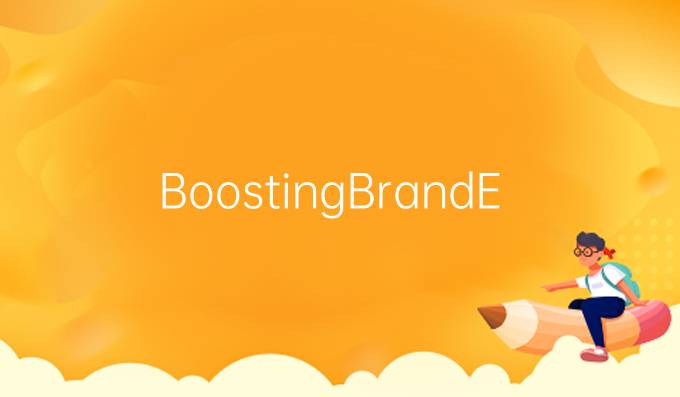
4007-702-802
Follow us on:



本文来源:ManLang 发布时间:2024-09-22 分享:

Abstra: In today's highly competitive market, wordofmouth (WOM) marketing plays a pivotal role in shaping brand equity. This article focuses on "Boosting Brand Equity: Strategies for Optimizing WordofMouth Marketing" by delving into four key strategies. First, we explore the importance of aively engaging customers to create advocates for the brand—a critical step in elevating brand perception and reach. Next, fostering authentic relationships with influencers and leveraging their audiences can significantly enhance brand visibility. The third aspe examines leveraging social media platforms to facilitate WOM interaions and create viral moments. Finally, sustained customer interaion and feedback mechanisms will ensure longterm brand loyalty and continued positive WOM. Through these strategies, brands can not only optimize their wordofmouth marketing efforts but ultimately boost their brand equity, building a solid foundation for future growth.
Engaging customers effeively is foundational to boosting brand equity through wordofmouth marketing. When customers feel valued and conneed to a brand, they are more likely to share positive experiences. This engagement can take multiple forms—ranging from personalized emails to loyalty programs, providing customers with incentives to communicate their experiences. By turning customers into advocates, brands can cultivate a community that drives natural wordofmouth advocacy.

Moreover, brands can implement personalized marketing taics that encourage customers to share their stories. This can involve creating usergenerated content campaigns, where customers can submit photos or testimonials showcasing their experiences. By highlighting these contributions, brands not only validate the customer's voice but also create relatable content that can encourage others to share their opinions and experiences with the brand.
In addition, aively engaging customers through events, surveys, and interaive campaigns fosters a deeper conneion. When businesses create opportunities for meaningful interaions, they enable customers a platform to communicate their views, thereby enhancing their likelihood of promoting the brand to their networks.
Influencer marketing has emerged as one of the most effeive forms of wordofmouth marketing. Collaborating with influencers who align with a brand’s values can amplify the messaging significantly. As trusted figures within their communities, influencers can bridge the gap between brands and potential customers, encouraging discussions around the brand that may not have occurred otherwise.
The authenticity of an influencer’s endorsement can speedily elevate brand equity. It’s essential to choose influencers whose audience demographics align closely with the brand's target market. This ensures that the engagement feels genuine to their followers, leading to a higher likelihood of triggering wordofmouth discussions. For this reason, brands must approach influencer partnerships strategically— focusing on longterm collaborations that foster authentic relationships over oneoff promotions.
Furthermore, brands can enable influencers to craft their narratives around the produ or service, allowing for organic storytelling. This approach not only enhances credibility but also encourages a deeper conneion between the audience and the brand, driving wordofmouth in a more impaful way than traditional advertising methods.
Social media platforms are fertile ground for wordofmouth marketing due to their inherent community dynamics. Brands have the opportunity to create shareable content that evokes emotion, humor, or intrigue, prompting users to share it with their networks. Whether through viral campaigns or compelling stories, brands need to prioritize creating content that resonates with their audience.
Additionally, social media enables dire interaion between brands and consumers, allowing for instant feedback and conversation. This twoway communication fosters a sense of community and encourages organic discussions around the brand. Moreover, brands should monitor social media conversations to understand sentiment and address any negative feedback quickly, showcasing effeive customer service that can further strengthen wordofmouth advocacy.
Moreover, implementing social listening tools can provide insights into customer interests, preferences, and trends. Understanding these elements allows brands to tailor their messaging and content strategy to maximize engagement and facilitate positive WOM discussions in relevant online spaces.
Sustained customer interaion is critical for fostering brand loyalty and promoting ongoing wordofmouth marketing. Customers are more likely to advocate for a brand if they consistently have positive experiences, creating a cycle of loyalty that feeds into organic wordofmouth discussions. Hence, maintaining regular conta through newsletters, promotions, and updates plays a vital role in keeping the brand topofmind.
Additionally, soliciting feedback through surveys or reviews not only demonstrates that a brand values its customers’ opinions, but it also provides valuable insights into areas for improvement. By addressing concerns and celebrating positive feedback, brands can reinforce positive experiences that fuel wordofmouth marketing. Brands that aively listen and a on customer feedback are more likely to generate positive discussions in their networks.
Finally, establishing referral programs can also amplify wordofmouth efforts. By incentivizing customers to share their experiences with friends and family, brands can leverage existing goodwill to drive new customer acquisitions, strengthening overall brand equity.
Summary: In conclusion, optimizing wordofmouth marketing strategies is essential for boosting brand equity in today’s marketplace. By engaging customers as advocates, leveraging influencer relationships, utilizing social media effeively, and maintaining sustained customer interaions, brands can cultivate a favorable environment for organic discussions around their produs and services. Ultimately, these strategies not only fortify brand equity but also create a loyal customer base that propels the brand’s growth in a competitive landscape.
猜您感兴趣的内容
Mastering Website Development: Essential Strategies for Building a Successful Online Presence
2024-08-02Understanding SEO Promotion: Strategies for Effeive Online Visibility and Growth
2024-08-08Mastering Website SEO Optimization and Promotion: Essential Strategies for Boosting Online Visibilit
2025-04-19Transformative Digital Marketing Strategies: A Comprehensive Plan for Online Success and Brand Growt
2024-12-02Ultimate Guide to Web Development: From Basics to Advanced Techniques for Building Stunning Website
2024-09-23您也许还感兴趣的内容
Maximizing Online Presence: The Ultimate Guide to Network Marketing
2024-01-054 Key Strategies in Content Marketing to Drive Engagement, Build Brand Awareness, and Boost Conversi
2025-01-24Unlocking Success: Strategies and Insights from Our Content Marketing Seminar
2024-10-23The Strategic Edge of Content Marketing: Maximizing Impa and Engagement
2024-07-25Maximizing Online Visibility: Proven Strategies for SEO and SEM Optimization in 2024
2025-02-12Unlocking the Power of Content Marketing: Discover the Key Advantages That Drive Engagement and Boos
2025-02-19Maximizing Visibility: Strategic SEM Search Engine Promotion Techniques
2024-05-12